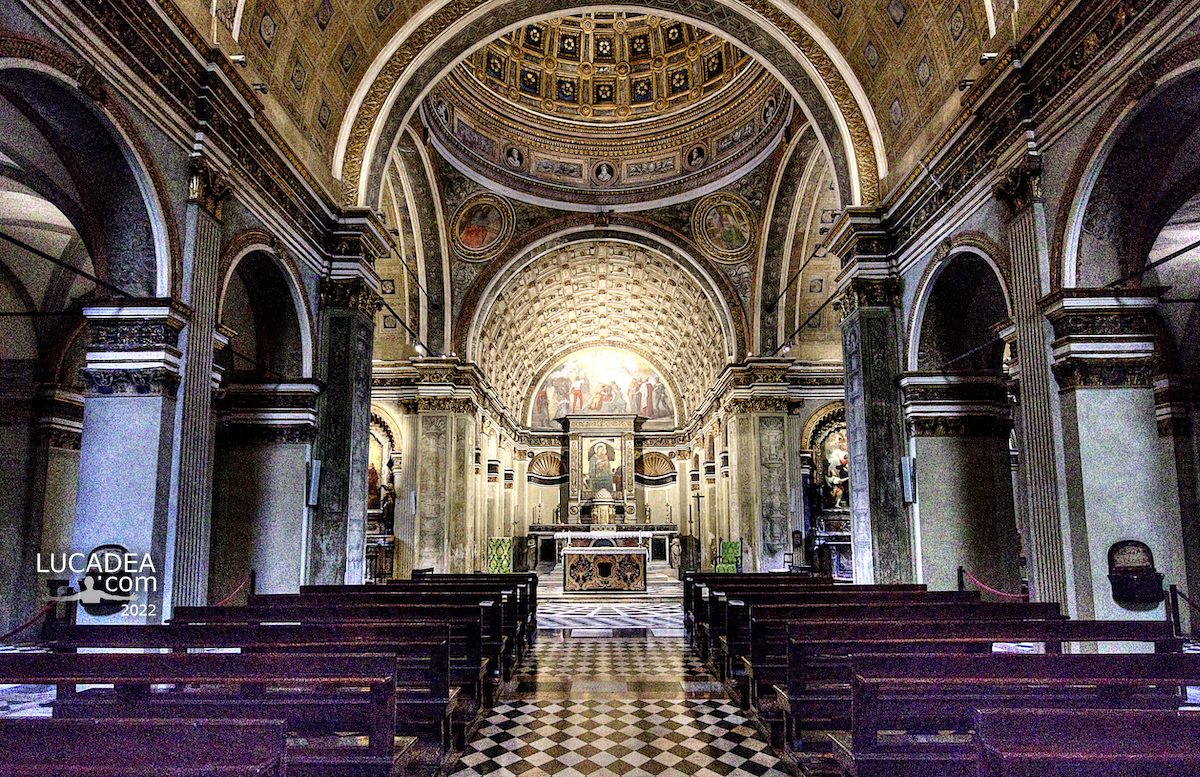Bramante's Perspective in Milan.
The Italian Renaissance left an artistic legacy that still fascinates and inspires today. One of the most extraordinary examples of this era is Donato Bramante's Perspective in Milan, an architectural masterpiece that testifies to the brilliance and innovation of this golden age.
In the late 15th century, Milan lived under the rule of the Sforza family, one of the most powerful Italian dynasties. The Sforza court was an important cultural and artistic center, attracting some of the best talents of the time, including Donato Bramante. Bramante, famous for his influence on Renaissance architecture, left an indelible mark on the history of art, and his Perspective in Milan is an eloquent example of his brilliance.
Bramante's project in Milan includes the Church of Santa Maria presso San Satiro, a small but extraordinary church located in the heart of the city. The peculiarity of this church lies in its illusionistic perspective, designed to solve a remarkable architectural problem.
Bramante's main challenge was the lack of space to build a complete nave. The Renaissance genius' solution was to create a deep false choir, seemingly as long and spacious as a complete nave. This perspective trick involved creating a wall painted in such a way as to appear to be a large extension of the church.
The deception is so well achieved that spectators, entering the church, are fooled by the illusion of a space much larger than what actually exists. Bramante's perspective opened up new creative avenues in architecture, demonstrating that art could overcome physical limitations and create fantastic worlds.
Today, Bramante's perspective in Milan is a tourist attraction that continues to amaze visitors. His ability to manipulate space and create illusions is a tangible demonstration of the power of human ingenuity. The church of Santa Maria presso San Satiro has become a symbol of how art can challenge convention and push the boundaries of the imagination.
Bramante’s Perspective in Milan is a stunning example of how art and architecture can work together to overcome practical challenges and create works of timeless beauty. Donato Bramante’s genius has left an indelible mark on the history of art, and his Perspective in Milan remains a testament to the boundless creativity of the Renaissance era. In a modern Milan, this church continues to inspire and enchant, conveying the timeless message that art can truly change our perception of the world.
And you, have you ever been to this Milanese church? Add your own comment or go to the bottom of the site to read what other visitors have written.
Photo taken with Canon EOS M100 and lens Canon EF-M 11-22.
The website of the Ambrosian Diocese: chiesadimilano.it/.
Click here if you want to see all the photos I took:

Here is where the church is located:
One of the main obstacles to the creation of a monumental structure was the lack of space for the choir, since the space behind the transept was occupied by the Contrada del Falcone. The problem was brilliantly solved by Bramante through the creation of reliefs and moldings in terracotta that were subsequently painted to form a perspective escape that simulated in 97 centimeters of depth a space equal to the arms of the 9.7 meter transept inspired by the previous studies of the Prevedari Engraving, becoming the strong point of the building.
Continua e approfondisci con Wikipedia
Bramante’s perspective in the church of San Satiro in Milan – Le point de vue de Bramante dans l’église de San Satiro à Milan – La perspectiva de Bramante en la iglesia de San Satiro de Milán – A perspectiva de Bramante na igreja de San Satiro em Milão – Bramantes Perspektive in der Kirche San Satiro in Mailand – Phối cảnh của Bramante tại nhà thờ San Satiro ở Milan – 布拉曼特在米兰圣萨蒂罗教堂的视角 – ミラノのサン・サティロ教会におけるブラマンテの視点
The text of the post was written with the help of ChatGPT, a language model from OpenAI.
Add your own comment to this post or read here what other visitors have written.
I have taken many beautiful photos visiting monuments in Italy and around the world and you can see them in the various article dedicated to the topic.
Visit the Official Tourism Site and plan your next trip to Italy. Discover the wonders of the Italian territory: Italia.it.
Are you looking for a good book on the history of art? Then I suggest you look among the Bestsellers of Amazon to see what the public is interested in at the moment. If you want some guide to Italy from an artistic point of view, I invite you to see: Grand tour d'Italia a piccoli passi di Philippe Daverio e il classico Italia in 52 weekend. Itinerari inconsueti tra natura, arte e tradizioni by Lonely Planet. If you are curious about mysteries you could read I monumenti esoterici d'Italia by Fabrizio Falconi.
To learn more about our privacy and cookies policy, go to the bottom of the site.
This page has had 46 views total.

